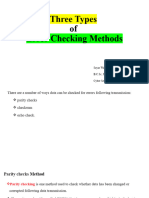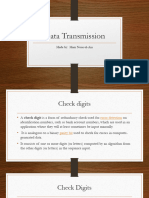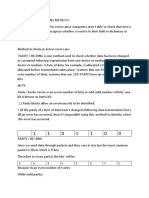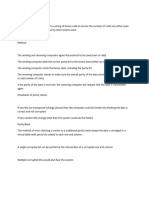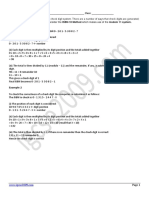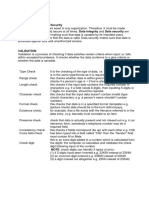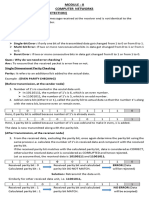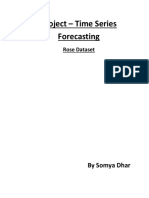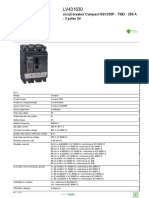0% found this document useful (0 votes)
31 views26 pages2.2 Error Detection and Correction
The document discusses various methods of error detection including parity checks, checksums, echo checks, and automatic repeat requests. It provides examples of how parity checks, checksums, and check digits are calculated to detect errors in transmitted data.
Uploaded by
gvm6wfg6sqCopyright
© © All Rights Reserved
We take content rights seriously. If you suspect this is your content, claim it here.
Available Formats
Download as PDF, TXT or read online on Scribd
0% found this document useful (0 votes)
31 views26 pages2.2 Error Detection and Correction
The document discusses various methods of error detection including parity checks, checksums, echo checks, and automatic repeat requests. It provides examples of how parity checks, checksums, and check digits are calculated to detect errors in transmitted data.
Uploaded by
gvm6wfg6sqCopyright
© © All Rights Reserved
We take content rights seriously. If you suspect this is your content, claim it here.
Available Formats
Download as PDF, TXT or read online on Scribd
/ 26
